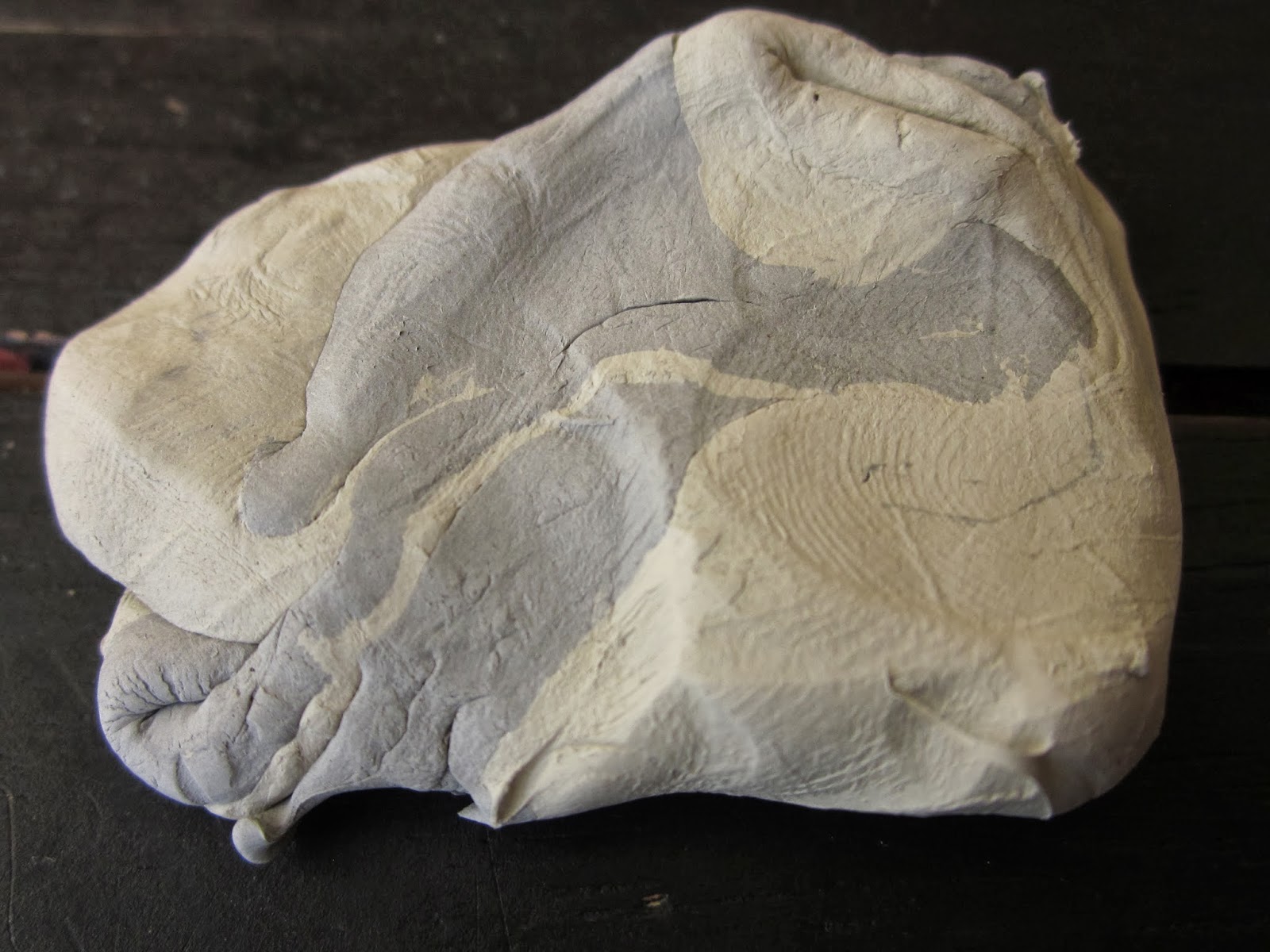So
many of you have asked if you could mix PMC Plus with PMC Sterling to get the
mixture we’re calling “960” that I decided to try it. I’ve resisted doing this because although I
(hugely) prefer Plus to PMC3 for its working qualities, if I’m trying to make
the strongest mixture I can that does not require a carbon fire, it’s logical
to use the strongest fine silver clay; PMC3.
But since you’ve asked, and
since I really do like the qualities Plus brings to the table, I went ahead
and tried it.
I weighed out and mixed equal amounts of PMC Plus and PMC Sterling to make the alloy I'll refer to as +960, and let it rest for ½ an hour. I decided to remake these earrings (pictured
above); Each earring consists of three textured parts, two thick ones (5 cards)
and a very thin one (2 cards). I rolled
the 5’s this thick so I could carve them when dry. I made the striped ones two cards to test
strength, both the strength of the dry clay and the strength of the fired
metal.
Once fired, I Keum-boo-ed the thinner components. A simple (and
unscientific) bend test suggested they were stronger than if I’d made them from
PMC Plus or PMC3 alone but not quite as strong as if I’d made them from 960,
the PMC3/PMC Sterling mix, which I will refer to as 3/960
Pros and Cons:
PROS of the PMC Plus
and PMC Sterling mixture (+960)
•Much less sticky than PMC3 alone or 3/960 (made with PMC3
and PMC Sterling).
•Takes texture better than PMC3 or 3/960 because it’s less
sticky and has less “bounce back”.
•The mixture has a longer working time than PMC Plus alone.
• Better dry-working qualities than Plus alone. It’s more
elastic than PMC Plus. This +960 carves beautifully when dry, just like the
original 3/960. The kind of carving I did on these earrings wouldn’t have been
possible on pieces made of PMC Plus alone as it’s too brittle.
•When fired, this mixture takes keum-boo gold readily. In that respect it is comparable to 3/960.
• It patinas as well as 3/960 made with PMC3 and PMC
Sterling.
CONS:
There is only one con as far as I can tell (after this very
limited bit of research): 960 made with
Plus is simply not as strong as 960 made with PMC3.














